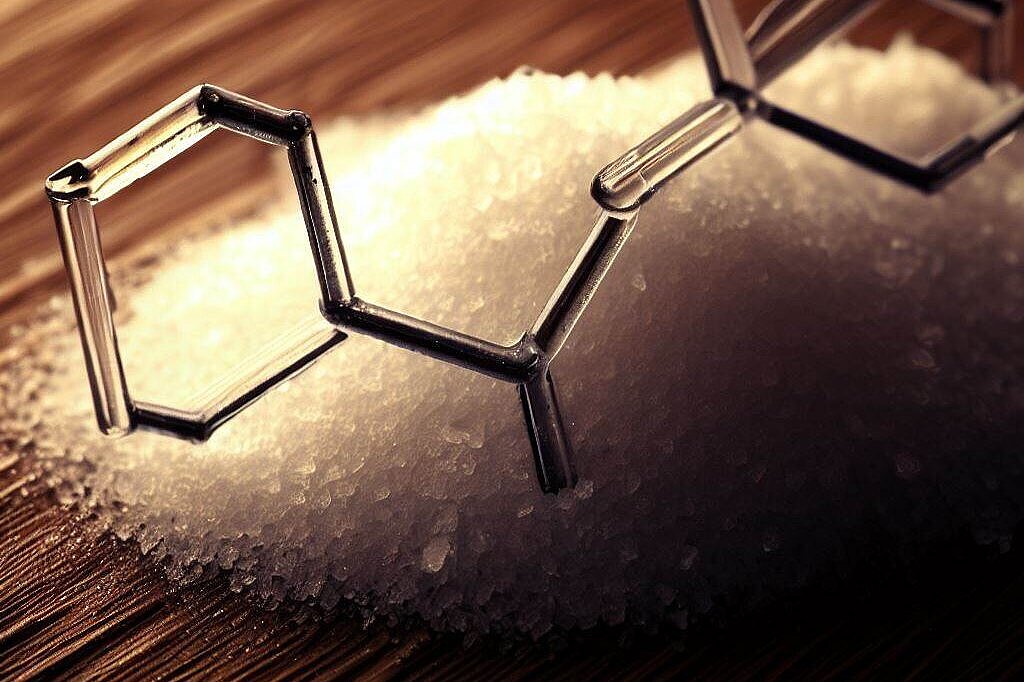Butylhydroxytoluene

What is butylated hydroxytoluene?
Butylated hydroxytoluene is a synthetic substance that belongs to the phenol group. Phenols are organic compounds consisting of a benzene ring with one or more hydroxyl groups.
BHT is mainly used as an antioxidant, i.e. it prevents or delays the oxidation of other substances. Oxidation is a chemical reaction in which oxygen is bound to other substances. This can lead to undesirable changes such as loss of color, loss of taste or rancidity. BHT therefore protects other substances from spoilage or decomposition by oxygen.
BHT is also used as a preservative, i.e. it extends the shelf life of food or other products. BHT inhibits the growth of microorganisms such as bacteria or fungi that can spoil food. BHT can also prevent the formation of mold or toxins.
How does butylated hydroxytoluene work in dogs?
BHT is mainly used in dog food and treats to keep them fresh and tasty for longer. However, BHT can also be found in other products that your dog eats or comes into contact with. For example, BHT can be found in cosmetics, medicines, plastics or rubber.
The effect of BHT on dogs has not been clearly established. There are various studies with different results. Some studies indicate that BHT can be harmful to health in high doses. For example, BHT can lead to liver damage, kidney damage or cancer. However, other studies show no negative or even positive effects of BHT on dogs. For example, BHT can strengthen the immune system, inhibit inflammation or delay the ageing process.
The European Food Safety Authority (EFSA) carried out a risk assessment of BHT in 2012 and found that BHT is safe for humans and animals at the permitted levels. The EFSA has set an Acceptable Daily Intake (ADI) of 0.5 mg per kilogram of body weight per day. This means that a dog with a body weight of 10 kg should not consume more than 5 mg ADI per day.
What should be considered?
If you give your dog products containing BHT or bring him into contact with them, there are a few things you should bear in mind:
- Pay attention to the ingredients list and the amount of BHT listed. If possible, choose products that contain little or no BHT.
- Pay attention to the total amount of antioxidants and preservatives your dog is consuming. Too many antioxidants and preservatives can lead to an overdose.
If you notice any signs of hypersensitivity or poisoning in your dog, you should see your vet immediately. We are not a substitute for a vet, but we try to be as accurate as possible. Every dog reacts differently and we recommend you get a second opinion or consult your vet if in doubt.
Stay healthy and take good care of your four-legged friend!😊
Similar to Butylhydroxytoluene
Butylated hydroxyanisole is a synthetic additive that acts as an antioxidant. This means that it prevents fats and oils from becoming rancid and smelling or tasting unpleasant. It is mainly used in...
What are tocopherols? Tocopherols are natural compounds that are only formed by plants. There are eight different tocopherols: alpha, beta, gamma, delta, epsilon, zeta, eta and theta. The most...
Propyl gallate (E310) is an organic compound made from gallic acid and propyl alcohol. Gallic acid is a natural substance found in plants such as oak bark, tea leaves or sumac. Propyl alcohol is a...
Ascorbyl palmitate is a synthetically produced substance that combines the antioxidant properties of vitamin C with the fat-soluble properties of palmitic acid. This means that ascorbyl palmitate is...



